Gigglewater may have built a presence in a number of markets around the world, but it’s all conducted, Wizard of Oz-style, by just one person. Catherine Monahan shares her story of taking an idea and turning it into a successful global brand.
For those that don’t know you what’s the backgound to Gigglewater and how you set it up?
Gigglewater is a 1920’s term meaning alcoholic beverage from the Prohibition Era. It came to me about two and a half years ago, when I was creating and designing a brand concept (The Speakeasy Club) for Greencroft and Lanchester Wines. That brand was about the Prohibition Speakeasy era in the US and I came across a photo of three girls in black and white bathing suits on a diving board, which said “Gigglewater – An Intoxicating Beverage”.
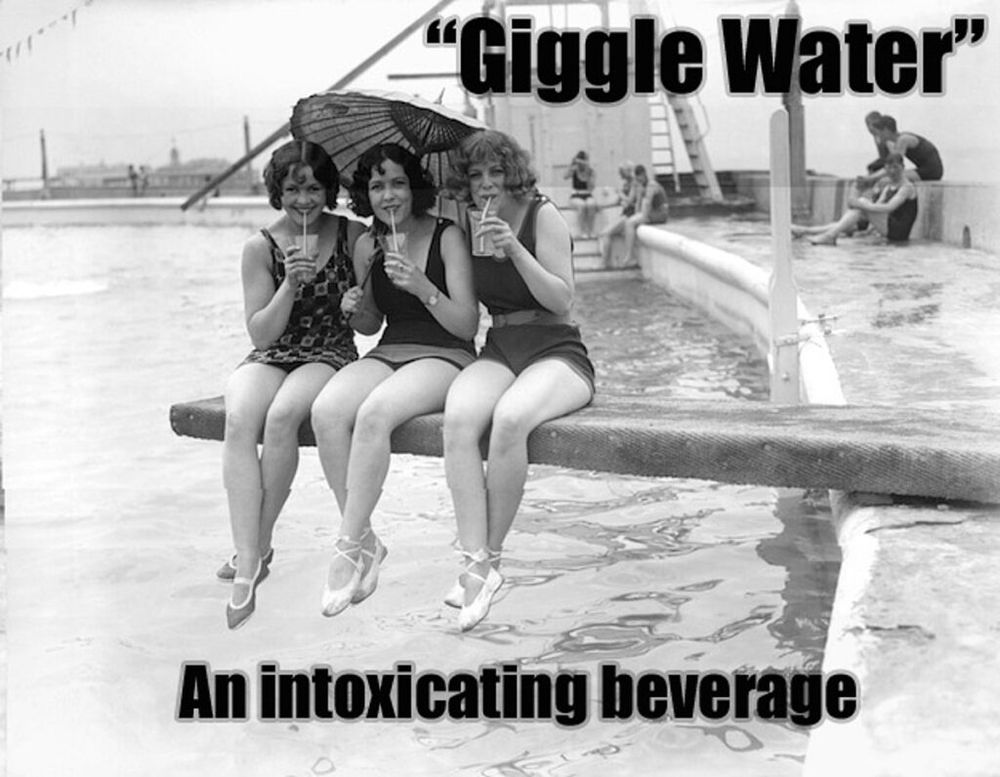
The term Gigglewater dates back to the days of prohibition – here’s the picture that inspired Catherine Monahan to bring it back today
I thought what a great name for a global sparkling wine brand – that the word Gigglewater could be synonymous to sparkling wine as Dyson is for vacuum cleaners and Sellotape is for tape, Perrier is for sparkling water etc.
The other thing I wanted to highlight is there is not enough balance in the wine industry, or in life, when it comes to consuming alcohol. With mental health such an important topic and eating right, drinking in moderation, the girls balancing on the diving board made me think about ‘Living Life in Balance’ – exercise, nutrition, meditation and drinking responsibly.
I wanted to work in growth categories – at the time (and still now especially with the new Prosecco Rose’s coming in) Prosecco was flying and to this day the idea is still to participate and innovate in exciting growth categories, such as hard seltzers, South of France and organics.
How did you develop the brand and what are its main principles?
So in 2017 I decided to create a sparkling wine brand (that has now moved into other areas) that followed on cues from other brands I love, such as Fortnum and Mason (the teal and mint green and gold tones) and to use a Champagne bottle (Ruinart) rather than the typical Prosecco bottle. I work with a wonderful family-owned winery where we work on the products together ensuring the style is relevant for markets and all the vineyards are our own – no bulk is brought in. The vineyards are organic but our main Gigglewater Prosecco DOC Treviso product is not certified as organic.
The brand’s key ethos is about ‘Balance’. Life is about celebrating, not escaping and we wanted to bring young people and families (via product bundles) into wine – using cans as well – and not making it snobby about wine, but rather, inspiring via lifestyle, innovation, and a culture of ‘giving back” and having fun. That’s what we are about.
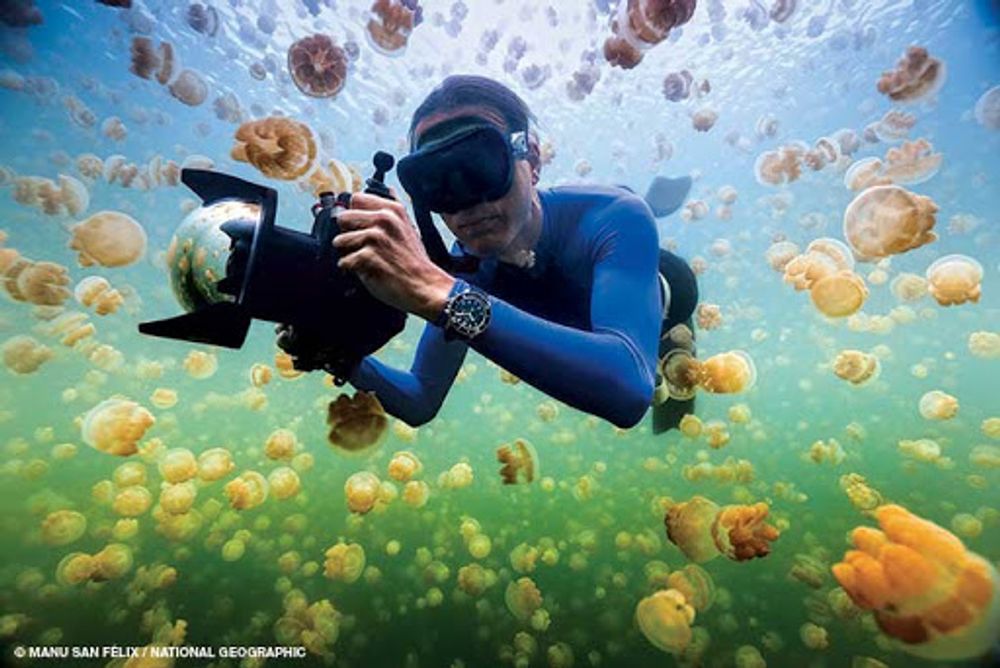
Gigglewater is committed to donating money through its profits to a number of ecological and sustainable projects
We also want to give back to community which is what inspires me personally. So from this year our G.L.O.W. (Gigglewater Love Our World) Foundationhas being giving a percentage of our profits to National Geographic’s Pristine Seas Project through Manu Felix – a world expert scuba diver who is leading it. We have also designed bespoke cans for sale in the Balearics in 2021 where the profits will go 100% to the project and to supporting the Save the Posidonia Project. We are also going to be donating to Dr Joe Dispenza’s “Give to Give” Meditation and Neuroscience Foundation.
How have you developed the brand over the last couple of years – in terms of building distribution, channels and key markets?
The first challenge was to streamline the canning solution. The first two years of the canning were riddled with issues because we didn’t do everything from design, to print, sleeve, can with one company. Now we have amazing partners in France and Germany although I’m also considering the UK for canning too but the lead times are generally still too long.
Gigglewater was initially launched in the UK via direct to consumer and smaller distributors in the on-trade via 75cl Prosecco bottle. The 200ml sparkling wine in a can was launched in Waitrose at the same time back in 2017, also with Deliveroo and leading London Theatres. At that time, Prosecco was a hugely saturated category, so I wanted to put the consumer first and test it with them and then take it back to grocery retail.
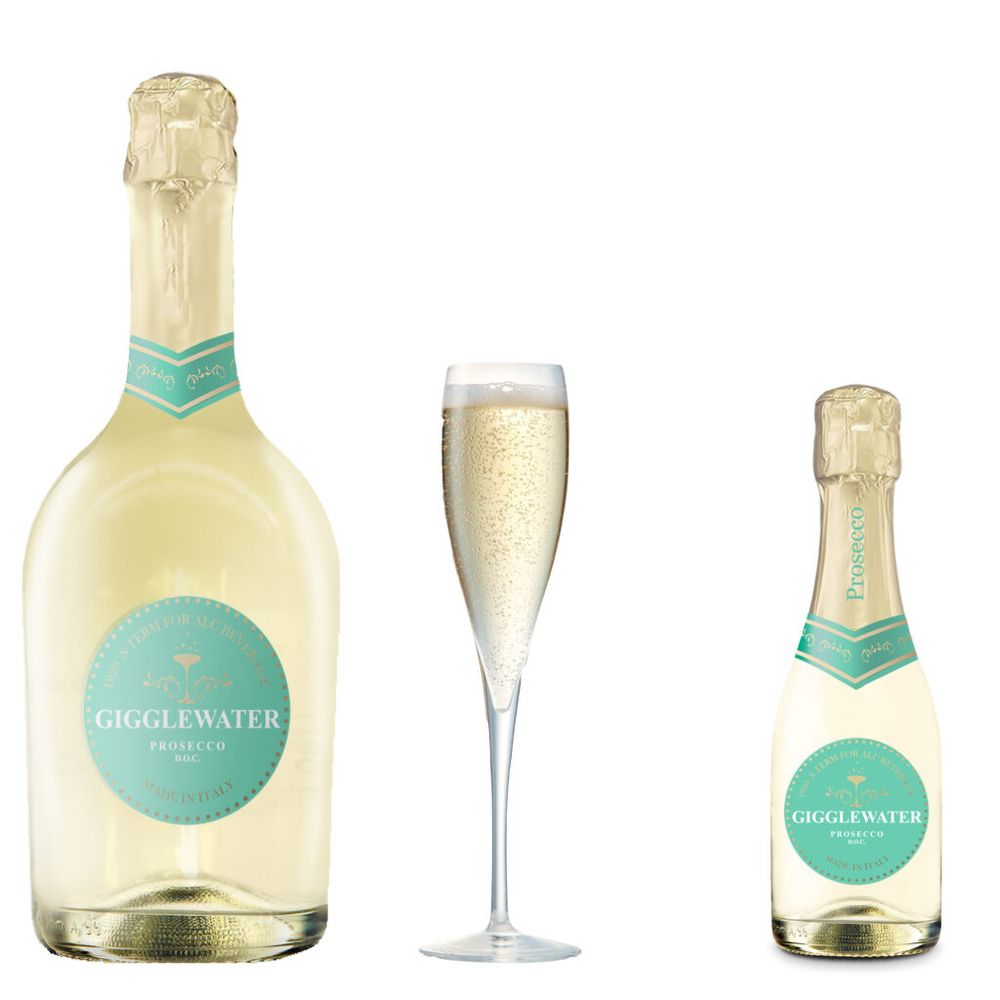
How Gigglwater first looked when it was introduced to the market
Canada came on board in 2017 and I’m very grateful to them as they have really supported the brand. We have been on billboards on the motorway and have won best ‘Prosecco in Class’ and ‘Best Global Sparkling’ brand three times across different awards.
Our Prosecco DOC Rosé launches in January 2021 in Canada, with our sparkling white wine in cans launching in November and our Hard Seltzers and Sunset Collection wine range, potentially in January.
The UK is now a focus market with our new Hard Seltzers, Prosecco DOC Rosé and new wine range. This is the first time we are presenting to grocery channels and combining our DTC.
We have just sent our Gigglewater Prosecco DOC Treviso over to Australia and we hope to follow suit with the cans in early 2021. We will also be launching in Hong Kong in December and in Sri Lanka, Brazil and the Caribbean in January 2021. This month we are in the process of cola waivers and fulfilling all the legalities needed to sell in the US.
How have you supported and marketed Gigglewater?
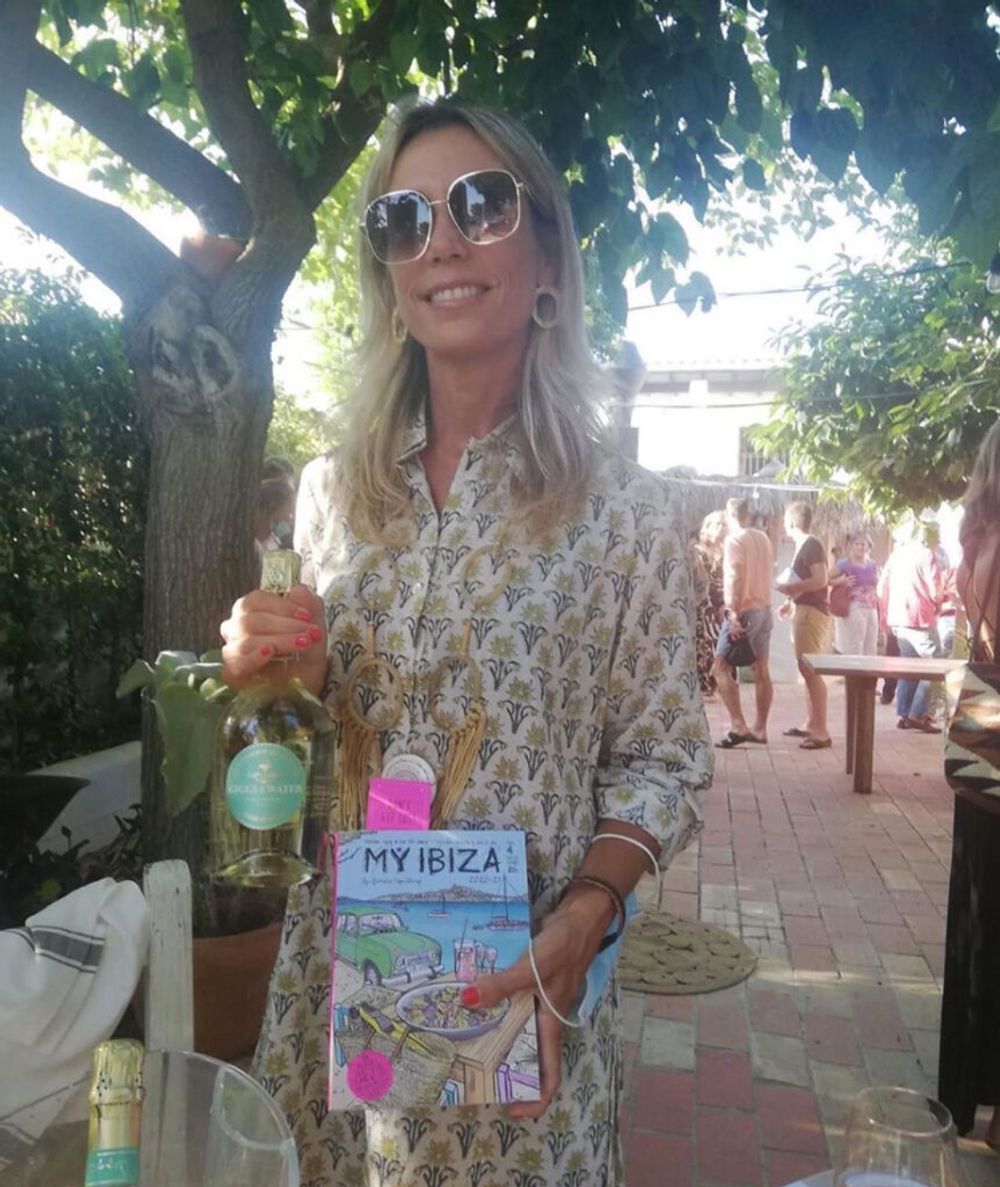
Catherine Monahan is quickly building her Gigglewater brand in key markets around the world
In terms of “how”, well it’s currently only me in sales so I’ve tried to focus on markets where the distributors are balanced, professional, credible, so that I can support them with marketing and social media and they can manage the clients and sales.
I’ve also found that sponsoring events that are relevant to the brand has really helped with brand awareness, e.g. sailing, ladies polo, pop up fashion events, food and wine events.
During the lockdown we launched a ‘Brand Ambassadors’ campaign which involved selected Brand Ambassadors doing zoom and Instagram/Facebook live videos talking about the wine, talking about their life and reality during lockdown and we hired an award-winning wellness chef, Raul Crespo to create bespoke recipes that matched our Prosecco and we spoke about and cooked these live online.
These went well and we will be launching a new campaign globally, to encourage more of this with small events and ‘nights in’ at the ‘Ambassador’s’ houses where they host a party and generate sales for the brand and receive commission for that. So building the sales via them as well.
The brand is doing really well in grocery in Spain and Canada and Ibiza, so the focus is to develop grocery channels and independent retailers and bring on new distributors globally and to work with.
How do you stand out in such a competitive, price focused market as Prosecco?
The Prosecco category has become a more ‘everyday’ category than it was in the past, which was more about celebrations and parties and treats. Consumers have now adopted Prosecco as an everyday affordable luxury. I believe that Prosecco DOC Rosé will reinvigorate the category and will most likely cannibalise rosé sparkling volumes from other categories. Rosé has become very sexy again, so the timing seems to be right.
Online and e-commerce sites will continue to grow and brands need to offer choice and variety, or hop on board affiliate marketing platforms to get their brands out to more consumers via new databases. There is more opportunity for growth in Europe for Prosecco and the brands that market themselves well in the UK and create top of mind experiences and promote themselves, will stay – as well as the competitively-priced retailer brands. Brands with neither of these two will probably fall away long run.
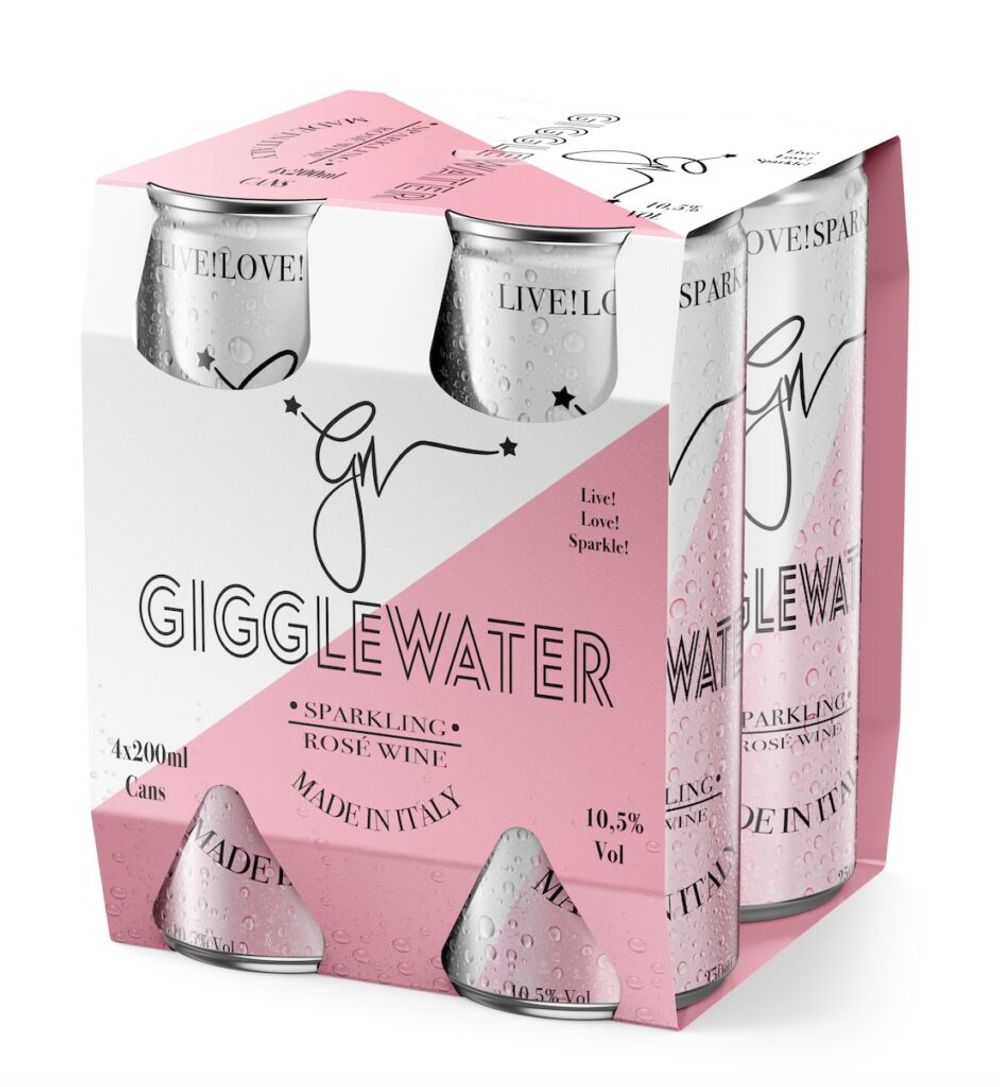
Gigglewater has used its packaging as a key point of difference to stand out on shelf
Packaging is really important – the quality of packaging has to be as good as the product and you need a strong, engaging, marketing strategy that builds a brand, rather than constant cheap promotions and no marketing. Brand owners need to support retailers. If they want to offer better quality products, with beautiful packaging then they need to help drive consumers into store and sponsor events, and advertise through multi-channel marketing.
It’s also important to offer added-value to consumers. Free gifts, events, tastings, marketing materials, competitions, trips to the vineyards and so on. Make your brand a trustworthy, interesting experience.
You have really pushed DTC in lockdown – talk us through your DTC strategy?
DTC has intrigued me for years and I’ve never understood wineries and retailers who just do a plain drop down arrow website, with no content or engagement information for the consumer to get excited by and return regularly. So I’m delighted to see wineries and retailers making DTC a part of their overall strategy.
We are lucky in the UK as we don’t have all the legalities that the US does, so there is a huge opportunity if you get it right. As I haven’t presented to grocery in the UK before now, the DTC option was key during lockdown to grow the brand and drive awareness. The “Brand Ambassadors’ campaign was very much part of that where we could promote the ethics and ethos of the brand through our ambassadors talking to their friends. WE believe our leading fans and also our brand ambassadors can also be our best salespeople. Giving them merchandise, commission on sales, free product, the autonomy to create their own events and parties and sell to their friends or who they influence.
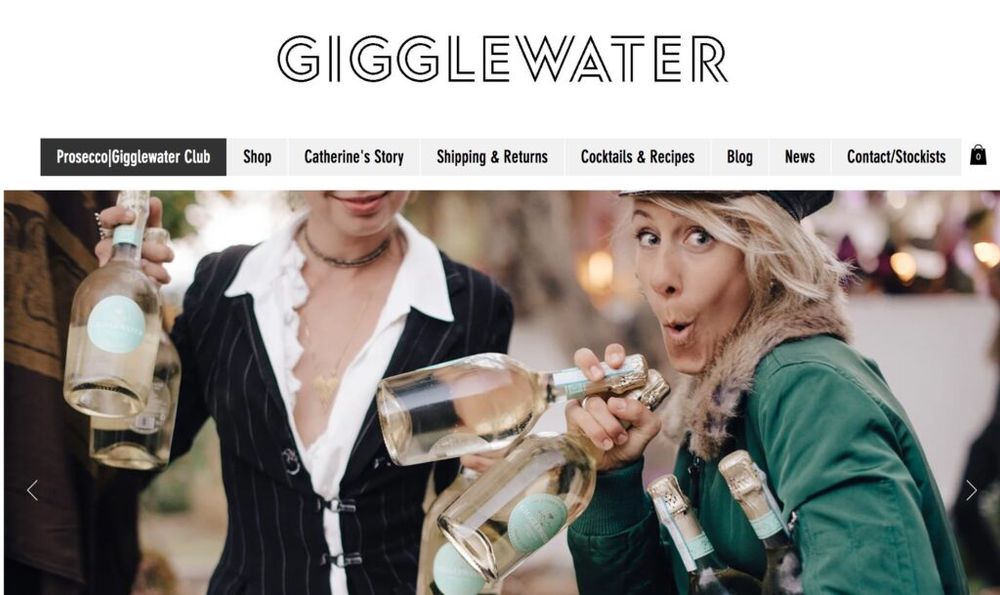
The Gigglewater website is to soon include its own DTC platform to sell both its own products and other relevant partners’ drinks
We are launching a new DTC platform this month that will incorporate lifestyle content, a subscription based model with lots of interesting options and we will also sell wines, spirits, beers from selected wineries and distributors who wish to collaborate in order to give further expansion to our range online.
2020 is a time to collaborate not compete. All wines are delivered within 24-48 hours and have a money-back guarantee. Our goal for 2020/2021 is to increase our customer database further, make them feel safe and offer testimonials of credibility to drive customers into store working side by side with our retailers and to lower our delivery costs.
How do you balance DTC with working with traditional channels – are they not in conflict?
I don’t believe they are in conflict no. They’re different and offer different things both service-wise and product wise. It depends how you manage it, market it, pitch it. If you sell your products online at a much lower cost than the retail outlet, then that’s silly as the customer will simply delist you.
For Gigglewater, the DTC platform is a brand hub – awareness platform where we can talk daily about our news, marketing, plans, podcast, videos and supports the retailer with information and data. We will have coupons and new ideas within our new site launch that will drive consumers in to store, as well as give them different reasons to shop online. Some retailers do not have all our products, so, for example, we can do an in-store price promotion, but also on pack competitions to drive consumers to buy the other products online and potentially if successful the retailer might take them on.
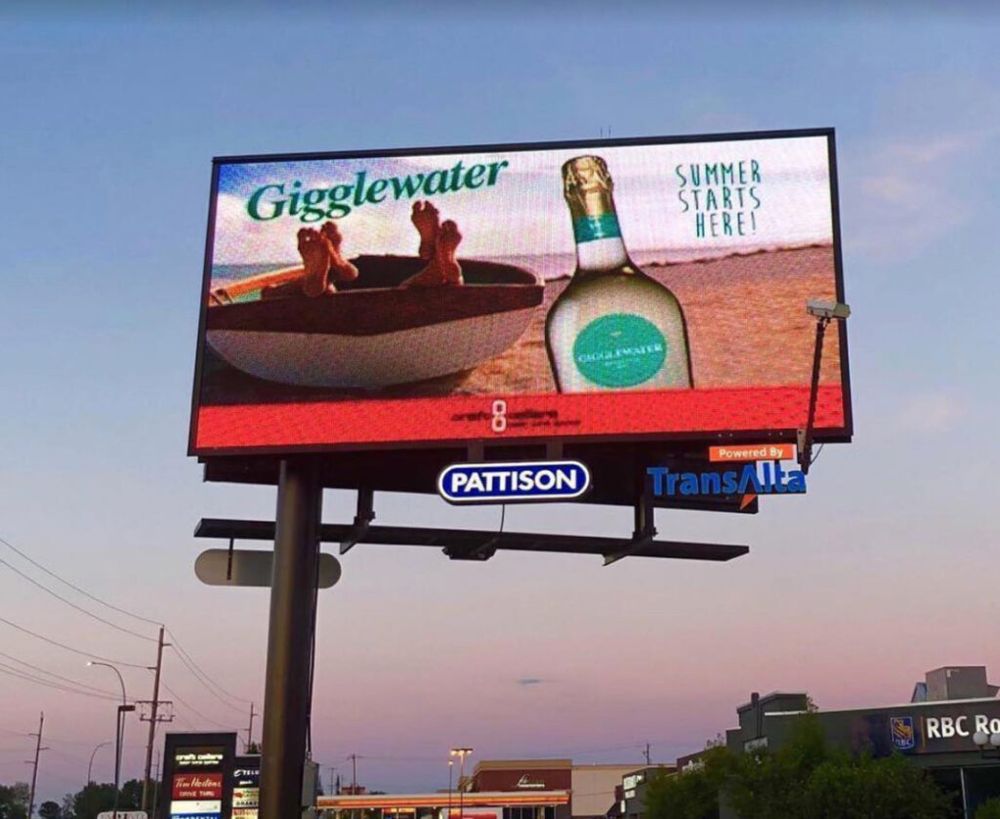
Gigglewater has worked hard to raise its profile and brand in whichever market it goes into
We would also do ‘Bundle’ pricing strategy with our online products offering them a family of options which we can’t do in-store. We can also offer early discounts and advertising on new products in the range which may not have launched in store yet. So we can pre-advertise for retail as well as for ourselves.
More importantly remember consumers don’t shop online on your website daily, but they do go to the supermarket regularly during the week, so not having your brand in grocery affects top of mine brand awareness. DTC also allows us to give automatic discounts that consumers can take into retail and use (if we agree upfront with the retailer) and also online.
We can create different revenue streams online with offering premium, custom, new offerings, bundle pricing for products online, plus sell merchandise, online events offers and so on. We can also use customer data to spoil our online customers direct with rewards – this is something retailers should look into as we are in a world where everyone wants bespoke service, treats, and so on.
One of the ways to create a good partnership with retail in my mind, is to realise four things doing DTC:
1. Delivery costs are not cheap – it cuts into profits unless you have your own delivery vans.
2. Why not direct consumers to local stores that have your products? We are launching a mutual loyalty programme for online and retailers and independents sales in store.
3. Don’t promote the same product if it is not on promotion in retail as consumers will purchase online potentially if they find out.
4. Share data and how you can mutually help each other grow and innovate.
Do you see retailers and traditional operators opening up more to DTC the more bigger brands – Nike, CocaCola, Unilever – show what can be done and it becomes more established with consumers?
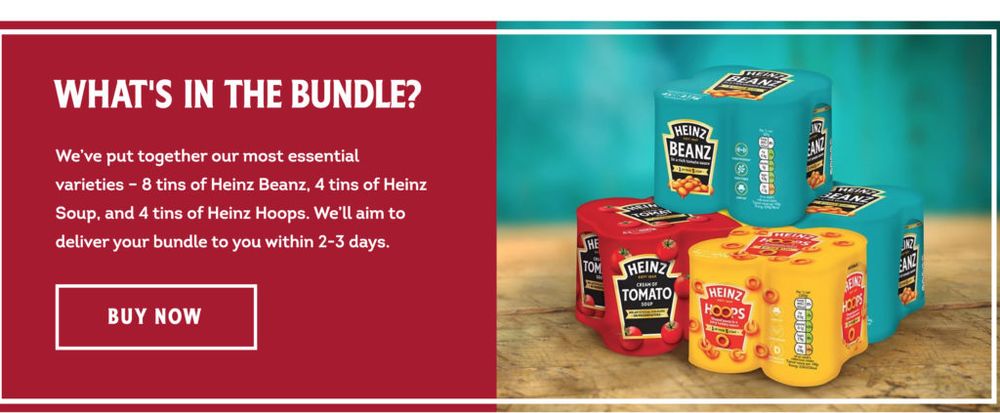
Heinz was one of a number of major FMCG brands that have launched DTC sites during Covid-19 lockdown
A lot of the big brands already do this, they just don’t shout about it (I imagine for fear of losing retailer market share) but this is changing. Heinz launched new products online that it doesn’t have in store so manages retailers that way. I think in the UK we have been less “online” advertised. It’s always been known that men buy wine online and not many women, yet women are very happy to buy a £250 blouse on Net-a-Porter.
There is a kind of guilt, bizarrely, but that is changing and especially with younger generations. Freixenet has created more lifestyle branding in the past few years and they sell online as well as in grocery in the UK. So if they can do it, we should all be able to do so. You just have to add value to your bricks and mortar clients.
Offering bespoke designed and or premium product ranges not available on the high street is also a way of standing out with your DTC.
Your DTC strategy should strengthen your retailer relationship. Bundle up items you use the most often on the DTC site as subscription offers and then have a clear store locator right next to your products so that consumers can find a store nearby if they prefer that option.
Tell us about your new brand launches?
Prosecco and Provence have done an outstanding job promoting their respective categories, to the extent that both words are stronger than most brands and are brands in themselves. The Prosecco DOC Rosé category has already been well PR’d by the Italians and has created some excitement, so actually the reason for the launch has been created by them.
The new Gigglewater Rosé Sparkling from Treviso Italy and the Gigglewater Prosecco DOC Rosé Millesimato 2020 have been launched primarily due to demand from Canada, Ibiza and the Caribbean. The Millesimato is made using a minimum of 85% Glera and 15% Pinot Noir, vinified on its skins with a minimum of 60 days lees ageing, required after the second fermentation. We are staying on the drier side of the residual sugar option.
You also have a new Sunset Collection?
The Sunset Collection came about from literally watching the sunset in Ibiza and having a feeling of the South of France meets Ibiza and thinking wouldn’t it be nice to create a quality and affordable range of wines from the leading sunset destinations in the world.
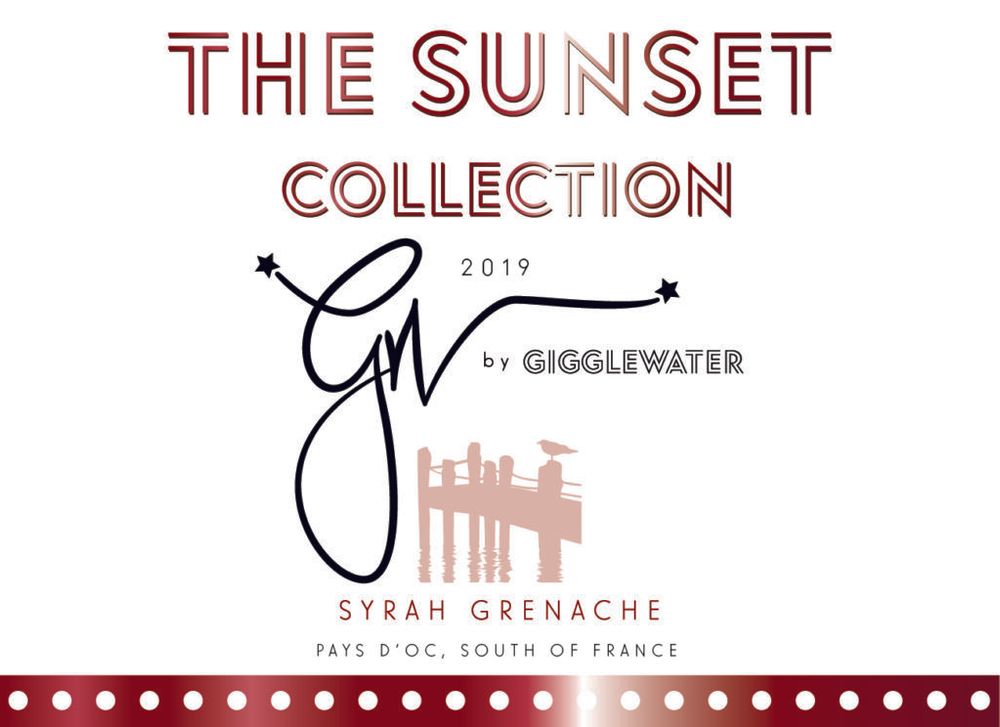
We are all about creating experiences, selling a dream and a lifestyle and so we have created this elegant range of wines, inspired by our favourite ‘Sunset’ destinations around the world. Offering them ‘Sunsets in a Glass’. This is a very special brand to us – about friends, family, sharing magical places and experiences and you will see this in our marketing campaign starting in November 2020.
The Sunset Collection packaging highlights simple icons that reflect the feel of chill-out sunset and the initial range comprises bespoke created wines from the South of France from Mas Bourry Vineyards and include a Grenache Vermentino 2019, Chardonnay 2019, Syrah 2019, Syrah Grenache 2019 and a Grenache Rosé 2019.
Why are you going into hard seltzers?
I was in the US at the end of 2019 and I saw the Truly brand. I liked its simple packaging and its very obvious “no added sugar”; “under 100 calories”, “only 5%” messaging. It appealed to me. This is a unisex category that is relevant to today’s consumer and convenience lifestyle. Hard seltzers appeal to a wide cross range of consumers, from students to mums, to men who are choosing to drink them instead of beer – you only need to see the success of White Claw with men to realise this.
It also ticks a lot of boxes for what Gigglewater stands for as a brand.
Consumers are looking for easy-drinking, smaller format, lower-alcohol products, so our range of hard seltzers has a base of apple wine instead of spirits and uses natural flavours, has no added sugars, 5% alcohol, 90 calories in a 25cl can. The three initial flavours are Passionfruit; our exclusive Aronia Berry; and Lime Zest and are for sale across Canada and the US in 4 packs and available in 12/24 packs for the UK, Ibiza and internationally.
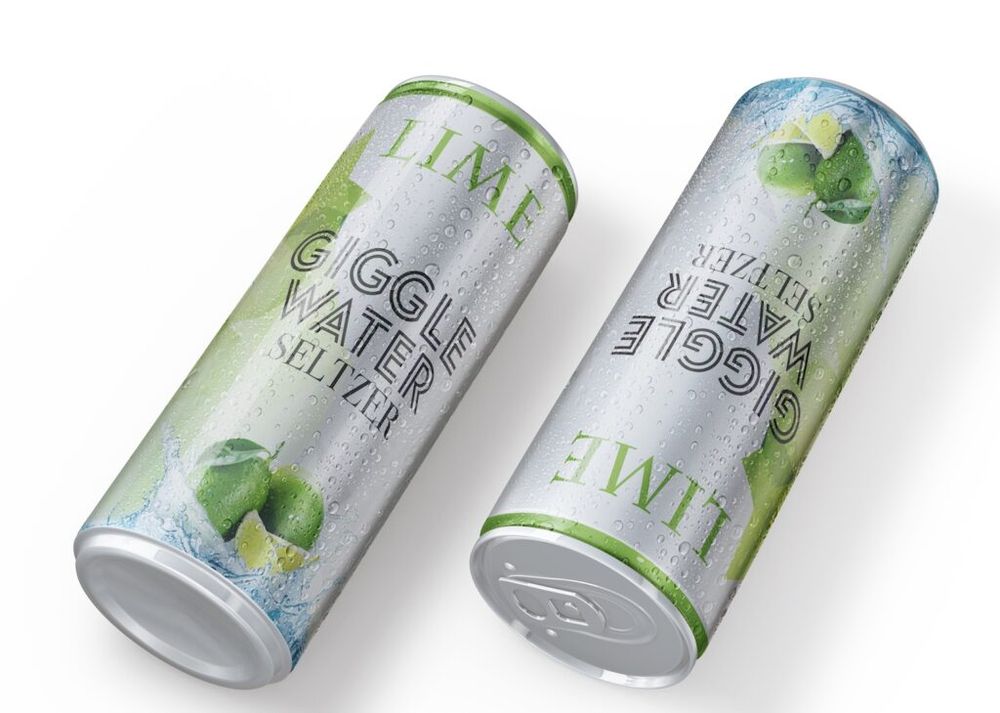
You clearly think buyers are open to new ideas and innovations as well as firefighting the way through the challenges of Covid?
I think that good buyers are always on the lookout for innovation and exciting new products. That said, they want to see you are supporting your product and brand and that consumers like it, want it and you can show there is need and desire for it. I would imagine they are looking at what has worked during the lockdown and ensure those products are still there as key, but they are also seeing huge shifts and changes in consumer buying behaviour.
How do you see the buyer, supplier relationship adapting – how can they help each other more?
1000% they should work together and collaborate with data, experiences, marketing support and helping add profit to both sides. I believe this is a time for collaboration not competition. How can we help each other with fulfilment (many options like using the retailer for DTC fulfilment)? How can we add value to your brand offline and in-store? Look at how you can help the convenience sector and also their DTC online – brainstorm together to solve unmet needs.
































